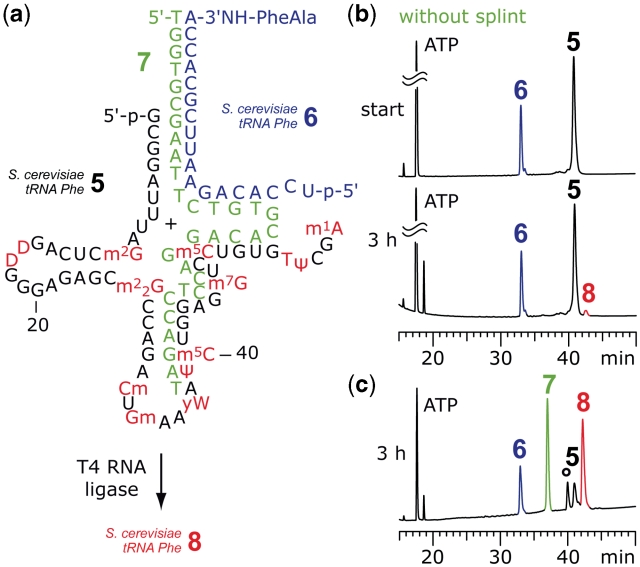Figure 5.
Example for splint-assisted enzymatic ligation of fully modified tRNA 5′-fragments to synthetic 3′-peptidylamino-RNA conjugates. (a) Structures of the 5′-fragment from S. cerevisiae tRNAPhe 5 and the dipeptide-RNA conjugate 6 to form a preligation complex that allows T4 RNA ligation of the full-length tRNA-peptide conjugate 8. (b) Without splint 7 only marginal amounts of product 8 were formed; reaction conditions: T4 RNA ligase (0.5 U/µl; cRNA = 40 µM each strand; donor/acceptor = 1/1), 50 mM HEPES–NaOH (pH 8.0), 10 mM MgCl2, 10 mM DTT, 1 mM ATP, 0.1 mg/ml BSA, 37°C. (c) Ligation promoted by splint 7 resulted in 75% yield of 8. The reaction was monitored by anion-exchange HPLC (for conditions see ‘Materials and Methods’ section); an unidentified, unreactive impurity is marked by an asterisk; reaction conditions: T4 RNA ligase (0.25 U/µl; cRNA = 40 µM each strand; cDNA = 40 µM; donor/acceptor/splint = 1/1/1), buffer as in (b) and 0.5 mM ATP, 37°C. For structures and abbreviations of modified nucleosides see Supplementart Data.

